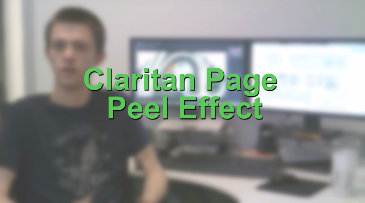- Bring a clip into your timeline on track 1 (have only video track 2 highlighted) and press command c to copy, and command v to paste and the clip will be on track 2.
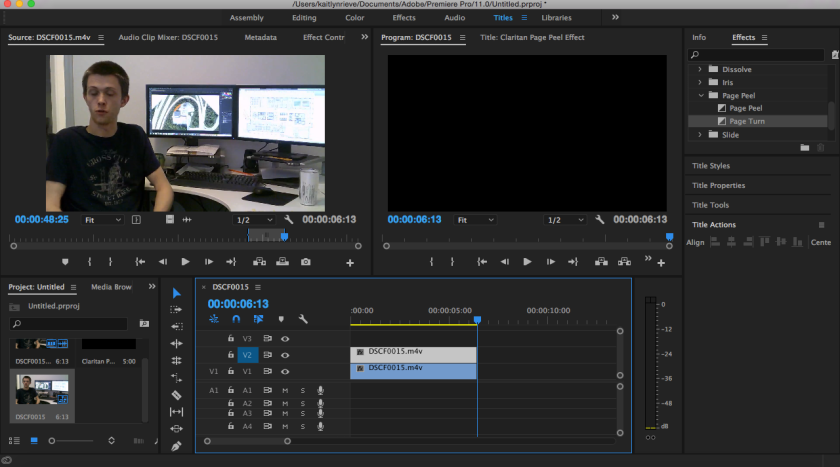
- Move playhead back to the beginning of the clip. Go to the effects browser and type “levels”. Select the “levels” filter and apply to the clip on track 2. With your clip selected go to the effects control panel and twirl down to the levels parameter. Adjust the RGB Black Output level from 0 to 60.
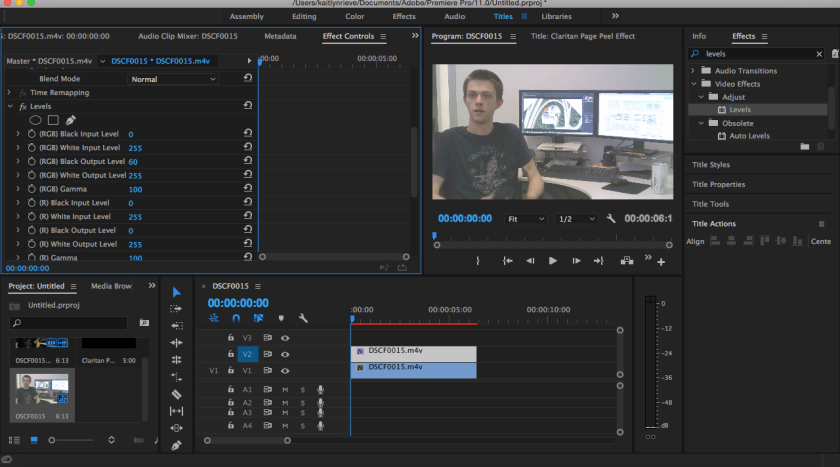
- Go to the effects browers and type “fast blur” and apply to the clip on track 2. Go to the effects control panel and increase the blurriness to 20. Make sure the blur dimensions are set to horizontal and vertical and enable the repeat edge pixels checkbox.
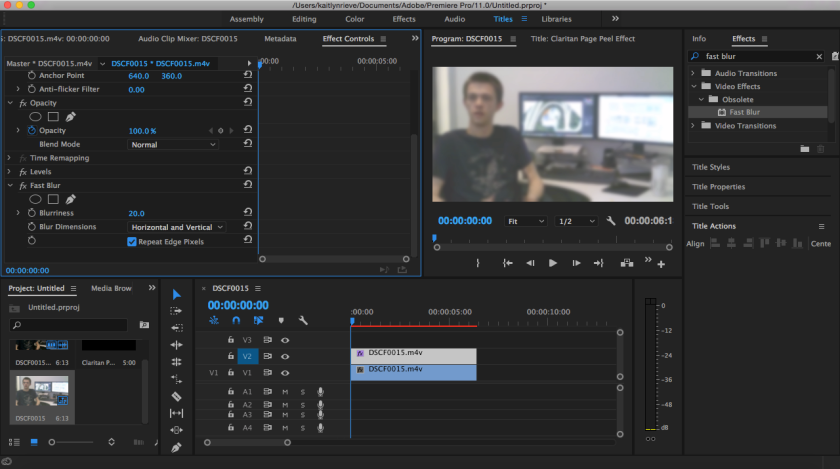
- Go to effects browers and go to “Video Transitions” folder and select “Page Peel” folder and select “Page Turn” and apply to the end of your clip. Select the transition so it appears in the effects control panel and click on Northeast to Southwest for direction for page turn and leave duration at 1 second. And add a title to track 3 for an added touch and add the same page turn effect.
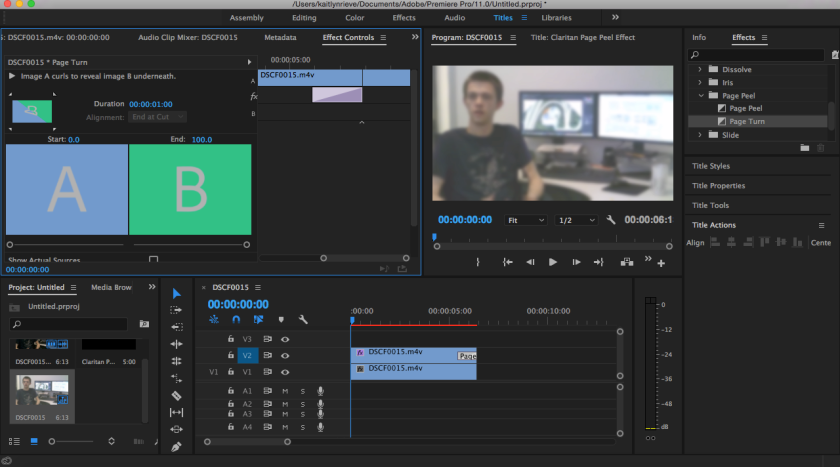
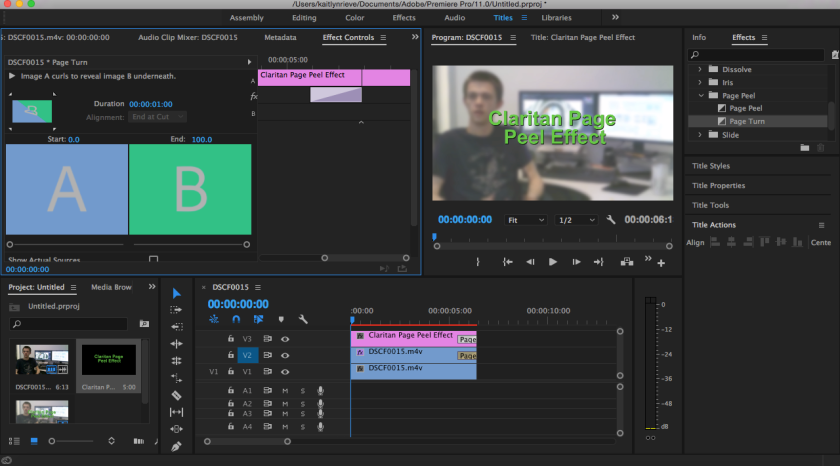
- Cut track 2 and 3 shorter and make sure they are the same length.
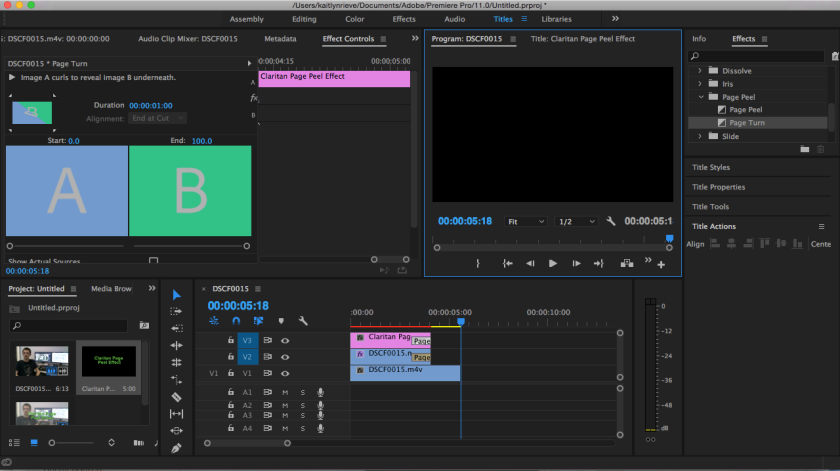
- The Claritan Page Peel Effect is complete!
Author: mooingduck101
John Baldessari: The Ordinary Extraordinary Person
A Brief History of John Baldessari
Rhetoric: The audio in the documentary compliments the speed at which the shots are changing and Tom Waits is speaking. Visually, every shot is interesting and keeps one eyes from getting bored. Shots are always moving very quickly throughout the film and the camera angle always gives the eyes plenty to look at. The content ranged from John Baldessari and his office, to his art, and a map of where he grew up. The documentary seemed to be persuading the viewer that John Baldessari’s art has been very influential in today’s modern artists. John Baldessari himself is speaking and that helps give credibility to the documentary. Viewers trust him and find humor in his down to earth character. The humorous dialogue between Tom Waits and him also helps to draw in the audience and keep ones attention. The appeal to emotion here, I think, is the way John Baldessari is a famous artist but is depicted in a very relatable way. I feel his target audience is young artists looking for inspiration. His message is art can be whatever you’d like it to be. Artists can be inspired by anything; just like the colored dot stickers inspired him.
Aesthetic: There were contrasting colors used in the documentary, in John Baldessari’s office it was plain, neutral colors and the shot would quickly change to colors popping on his artwork. The black and white photographs with the bright dots added contrast keeping the eye interested. Full, medium, and close shots were used and this helped keep the documentary different and entertaining. I feel the full shots were most effective in showing his workspace and always giving the viewer something to look at, whether it was the tree in the window or the books on his messy desk. The rule of thirds wasn’t really used when showing John Baldessari; he was usually centered on the screen. There also wasn’t a lot of panning used, but shots would change every 3-5 seconds. The camera height was eye level for a majority of the documentary, which contributed to John Baldessari being just like the average person. When the documentary first begins camera fixed is used as John Baldessari walks into the frame.
Affective: The audience is immediately left feeling like John Baldessari has had a very busy life. This feeling is acquired from the fast shots, all the art shown, all his achievements that are flashed on the screen, and the fast paced music. One is also left feeling inspired, especially artists. The documentary is aimed to show young artists that anyone can achieve their goals if they work hard and keep trying. John Baldessari is like any ordinary person, but he worked hard to create art that he is passionate about, and that he’s a mentor for anyone trying to do the same thing.
The Thoughts Behind Ambiguous Archiving
Archiving the erasable: By choosing to archive this moment I am choosing to not let it be erased. I’m choosing to forever record the moment and not let it be lost and become a distant memory.
Archivization produces: The act of archiving does not just put a time stamp on an event and gives the event forever meaning, it creates that event for those who weren’t there to witness it in the first place. You are producing that moment for days, years, and decades to come.
Photographer and the photographed: We have forever changed each other. Neither of us has left the other unaffected. I, the photographer, produced a moment that will not be left unknown. I, the photographed, invited in this person to capture a moment, maybe intimate, and archive it as they wish. We entered each other lives at the perfect moment. If either of us were missing, the moment wouldn’t have happened or wouldn’t have been archived.
Being a digital media maker means we have a responsibility to erase what we see fit as not being a moment worth archiving. We must censor the events we choose to share, and make a choice whether or not an event is worth producing. Producing an event brings it to life for many people, not just you. One must think about if many people would like to have that event brought to their attention. Would digital consumers appreciate certain events being archived. The act of archiving and sharing can always lead to controversy, but this may also be something to aspire for. Ultimately, it is up to the producer what they feel is worth archiving.
While archiving photographs I feel the producer has a responsibility to attach words to the photograph. That is, unless the photograph is purposely supposed to leave the viewer unclear on its meaning. Photographs are inherently ambiguous, and will leave digital consumers left with questions. Photographs leave viewers wondering what was happening, or what will happen next. But, this could also been seen as an advantage to photographs. Viewers may only stop and stare at a photo because they are trying to figure out its meaning or what’s happening. Without words connected with a photograph, viewers are left to create their own story and that could possibly be the bright side of ambiguity.
